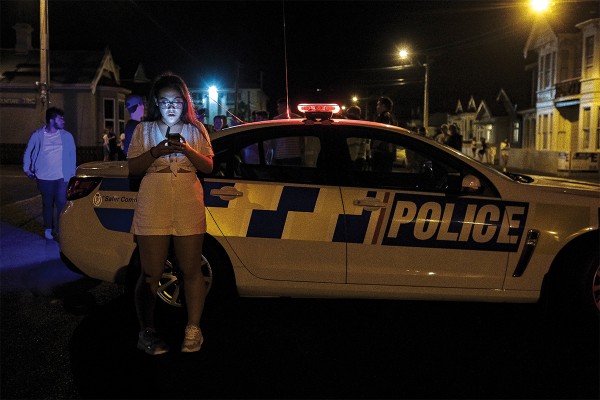Students have noticed an increased number of police on the streets of North Dunedin during Flo and O Week. The police confirmed that they have been trying to prevent the situation that led to Sophia Crestani’s death at the Manor last year.
“Since the tragic event at the “Manor” in October I have been working hard to identify and prevent a similar disaster,” said Campus Constable John Woodhouse (who, on a completely irrelevant tangent, is National MP Michael Woodhouse’s brother).
In 2019, the increased number of police on the streets around campus was partly driven by the University. University Proctor Dave Scott noted there was “collaboration with the Dunedin Police to ensure a visible police presence in the North Dunedin area through both ‘Flo Week’ and Orientation Week [in 2019].”
Tim, a fifth year student in attendance at many parties during Flo Week and O Week, noted that “parties were shut down earlier than last year”. He continued, “I guess [it was] as a response to crowds getting too big.”
Annabelle, a third year, said that she had noticed more police at parties this year, but said that “to some extent, it’s a good thing”. She reckoned that “once things calm down after O Week and the semester kicks in, [the police] will back off a bit.”
The police identified thirteen parties to monitor. Constable John Woodhouse said that at the thirteen parties monitored, the police provided “[h]igh visibility presence at the events [to] help the students feel safe”. To monitor the parties, the police would park up at each end of Castle Street and then walk around, according to students. The numbers of police ranged from about four to over ten.
“You feel kinda under surveillance,” Annabelle said. She thought that students had been reluctant to drink as much or undertake risky activities due to the police. Tim agreed. Annabelle continued that “it made you not drink as much, it made you not yell, it made you not approach the police to take photos”. Tim said that “standard drinking [was] allg” but “maybe not shotgunning beers and using funnels”.
The police have been working closely with the Good One register to identify party locations. When parties were not registered through Good One, individuals provided information about parties on Howe Street, Castle Street, and Leith Street to keep track of parties in the campus area.
Annabelle said that parties had been getting shut down early. “The second it hit midnight they would come in, the music would stop, they would start escorting people out and if you didn’t leave start leaving within a few minutes and piling out and going onto the streets they would leave and take you out.” Jamie, a second year, said that “it was hot” because the police came and stood right beside students to clear the flats.
The parties monitored by police ranged in size from over 2000 people to just over 100. Thirsty Boys was the biggest party. At that party, Woodhouse noted that the DJ was cooperative with the police. The DJ assisted them by beginning an “off the roof” chant to get two non-students down from the flat’s roof.
Big Red was also big (and red), with a total of 1500 students, Woodhouse said.
The Big Red party eventually moved to neighbouring Castle Street flat The Fridge due to attendee concerns about the lack of exits from Big Red, according to several students.
OUSA’s Ori stadium events attracted little attention from the Police. The OUSA Executive noted that they had received positive feedback about their events. The police apparently left an Ori Event at the stadium because it was “boring”.
“Considering the thousands of attendees over the two week period the number of arrests were minimal with most, as usual, being non Otago University students,” Woodhouse said. “The behaviour of the vast majority of students was excellent.”



